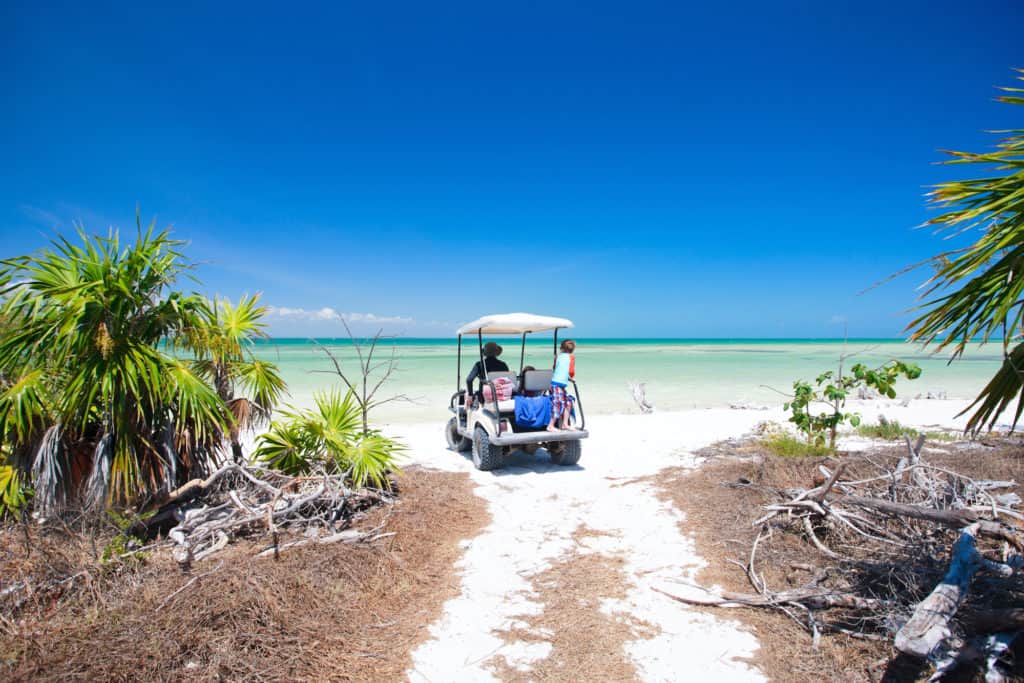
Golf carts are surprisingly adaptable little vehicles which can handle a broad array of different driving situations.
Can they handle the challenges of riding on sand?
Let’s examine this question and see what you need to do to prepare your golf cart for the challenges of sand-based driving.
Thankfully, the upgrades you need to make are not that complex or difficult to handle.
Can a Golf Cart Drive on Sand?
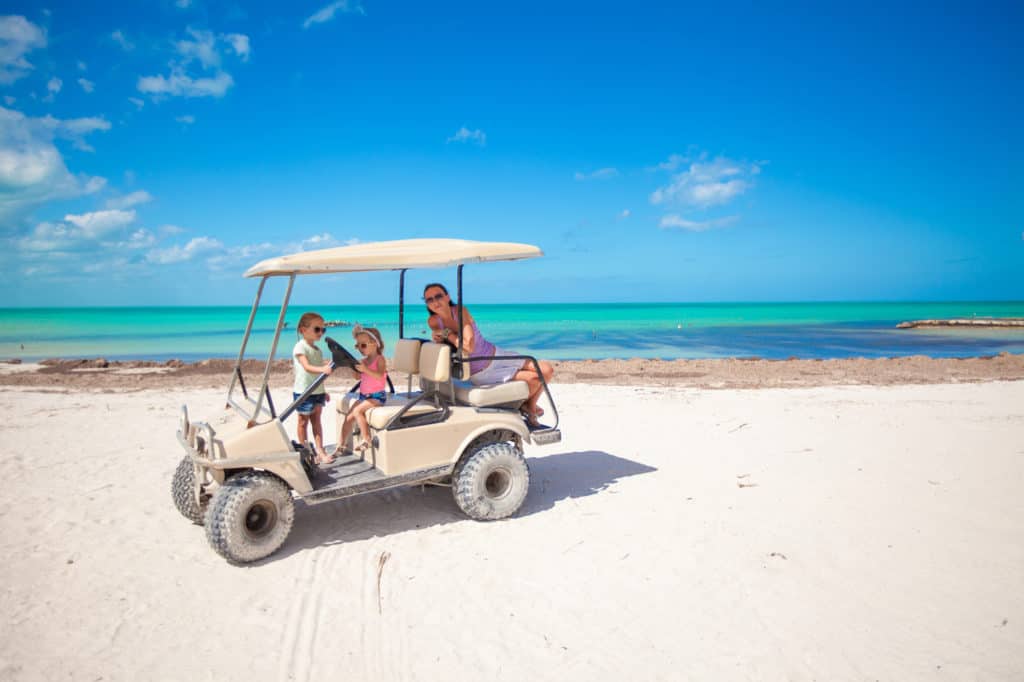
Yes, golf carts can drive on sand.
This is a fact that may surprise some golfers.
While it is true that driving a golf cart into a sand trap is a messy affair, golf carts can be adapted to drive in sandy areas—even sand traps.
That said, it is important to understand that not ALL golf carts can drive in sand.
Cheaper golf carts or those with less high-quality tires and engines may struggle to drive through sand.
For example, some tires may slide through sand or “spin” because they lack the type of tread necessary to provide the proper traction.
Weaker engines that cannot handle softer driving surfaces may also struggle to handle this situation.
Thankfully, you can upgrade your cart in ways that make it adaptable to sand.
We will discuss these upgrades in the next section to help you prepare.
Before we do, though, we want to mention that the density of the sand can also affect whether you can ride your cart on a beach or in sandy golf cart areas.
Loose sand will shift more and challenge your cart’s driving capabilities.
Denser sand will be much easier to drive on, such as on regularly used beaches.
Keep this fact in mind when driving on sand to avoid any issues with your cart’s operation.
Upgrading Your Golf Cart to Ride on Sand
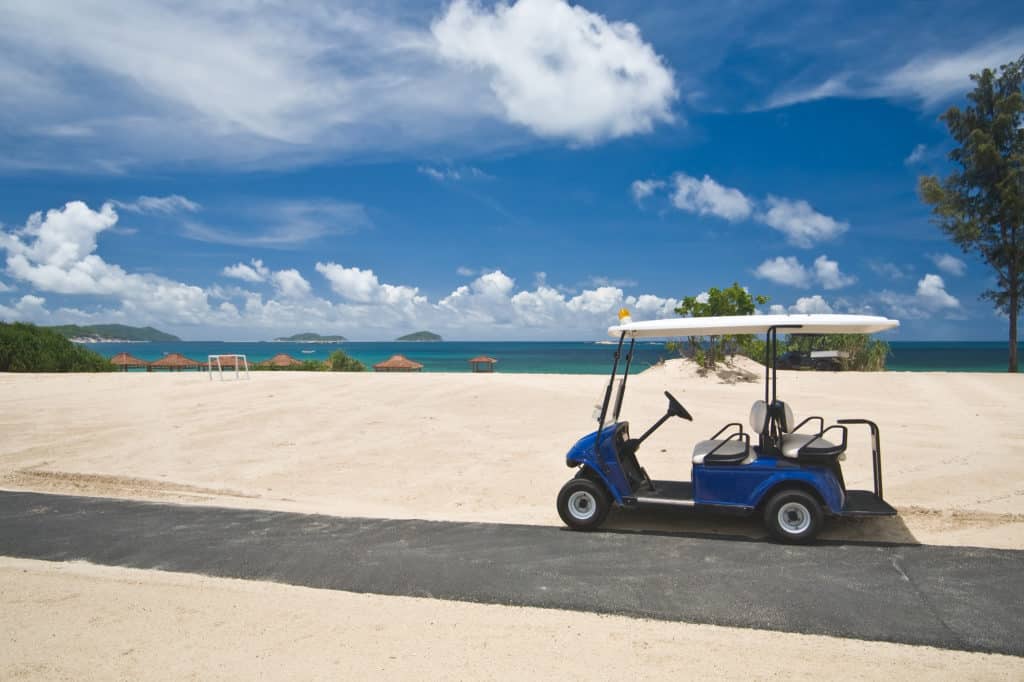
There are two big steps you need to take when upgrading your cart for sand driving: improving your engine and changing out your tires.
Before you take these steps, though, you should try driving your golf cart in sand.
If you have no difficulty, you can skip these steps completely.
If your tires seem to slip or your engine struggles, you need to follow the steps below to keep your cart safe.
(Note: If you have a gas-powered golf cart, you only need to change the tires because your engine is strong enough.)
1. Finding the Best Engine
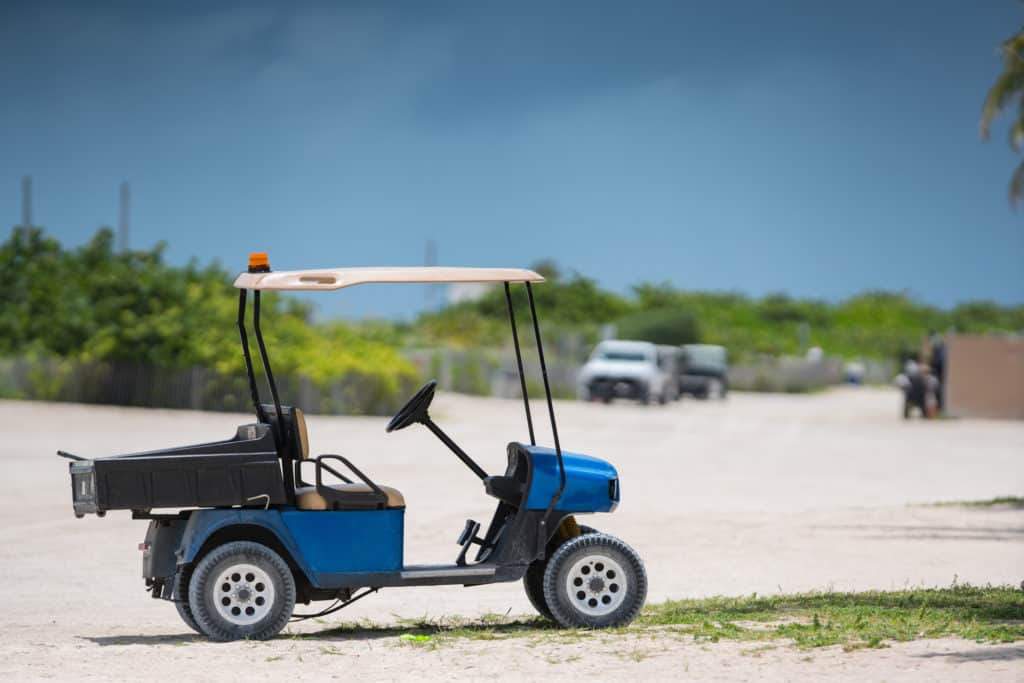
Electric golf cart owners need an engine that is at least 48 volts to drive properly through sand.
If you can upgrade your engine beyond this level, you improve your chances of driving through sand even more.
Why do you need such a powerful engine for sand?
Sand is a unique type of soil because it is so loose that it instantly robs your cart of its momentum and makes it harder to drive.
Think of the last time you went to a beach with very thick sand.
Every step you took was likely a struggle because you sank into the sand and had to restart your movement.
The same is true of a golf cart.
The sand robs its momentum and forces it to get through on sheer engine power alone.
This fact is different than when driving on harder or smoother surfaces, like cement, as your momentum does a lot of the work and your cart’s engine isn’t constantly fighting.
Just as importantly, you need a higher-powered engine because driving through sand is going to drain the battery sooner.
Make sure you upgrade your battery power, as well, and find an engine that is well above 48 volts.
The exact type should be specific to your cart model and manufacturer.
Fitting the wrong engine on your cart may also cause operational problems you should try to avoid.
2. Changing Out Your Tires
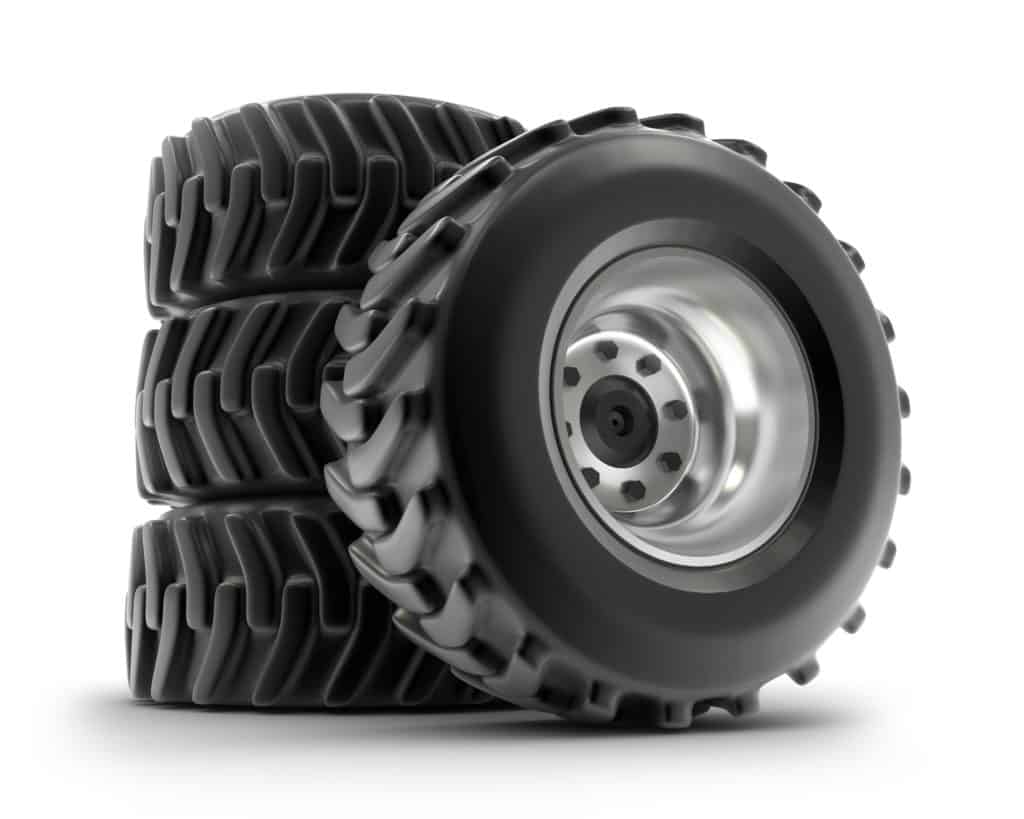
All-terrain tires are your best bet for driving through sand because they are designed, as their name suggests, for any type of driving situation.
They often have thicker treads which cut into sand more effectively, moving it without as much difficulty.
All-terrain tires have a broader surface that also increases the friction on the sand and makes it easier to get through it without any difficulties.
The most important step here, though, is making sure your tires are properly inflated.
You see, there’s a trick you can use if you don’t want to change what wheels you use on your cart: underinflation.
If you take a little bit of air out of your tires, you increase the surface area of the tire hitting the sand and make it easier to get through it without a challenge.
There are downsides, though.
Underinflated tires are more likely to burst or go flat and are not suited for firmer driving conditions.
So it is usually not a good idea to follow this step – you may end up having to change your tires anyway when they burst as you drive.
Instead, just install the all-terrain tires as suggested above to avoid any possible confusion.
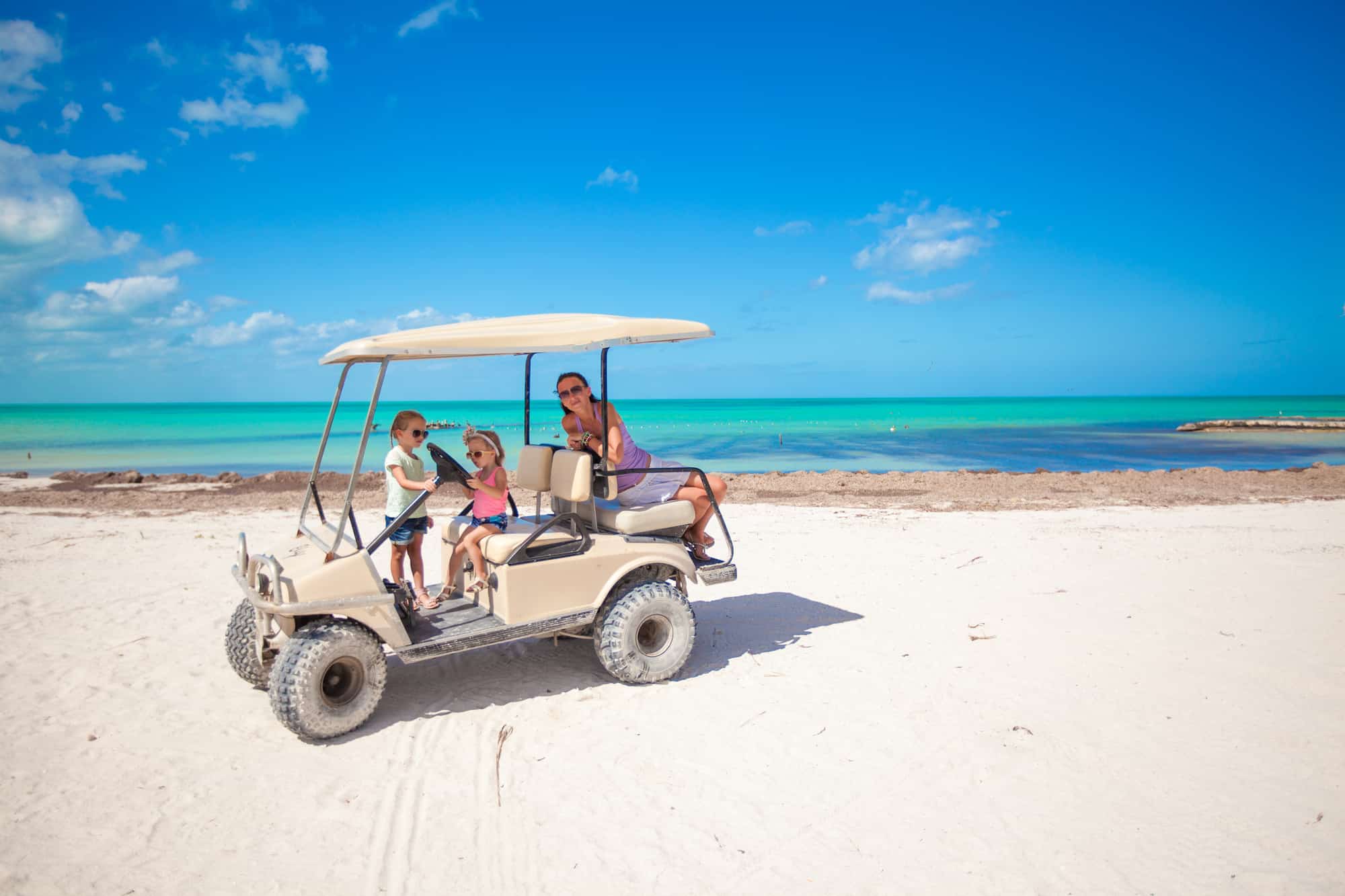


Leave a Reply